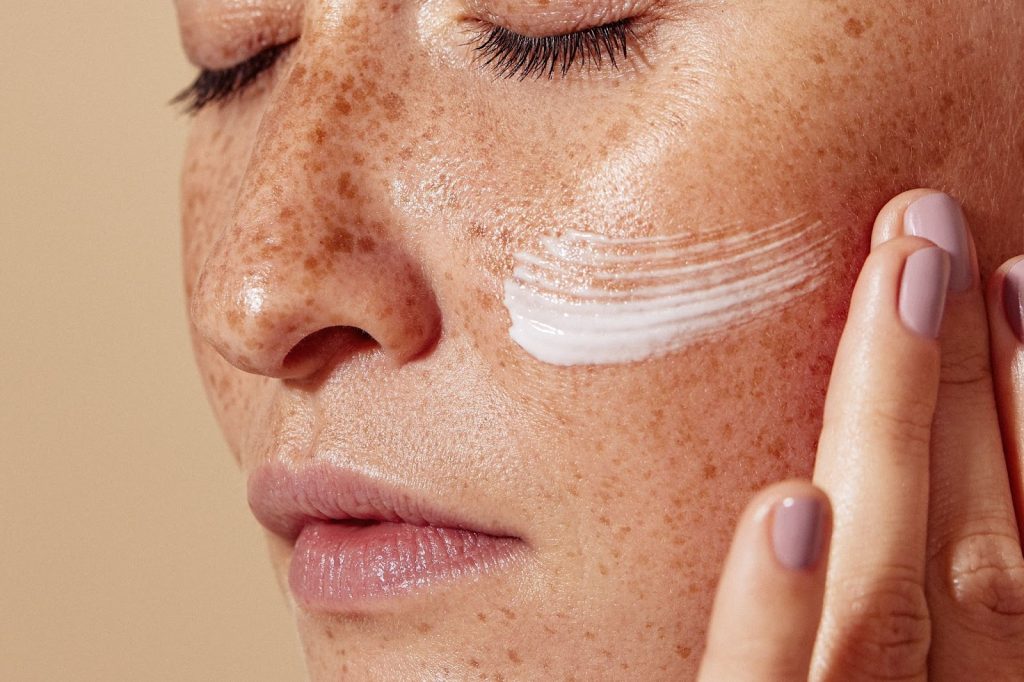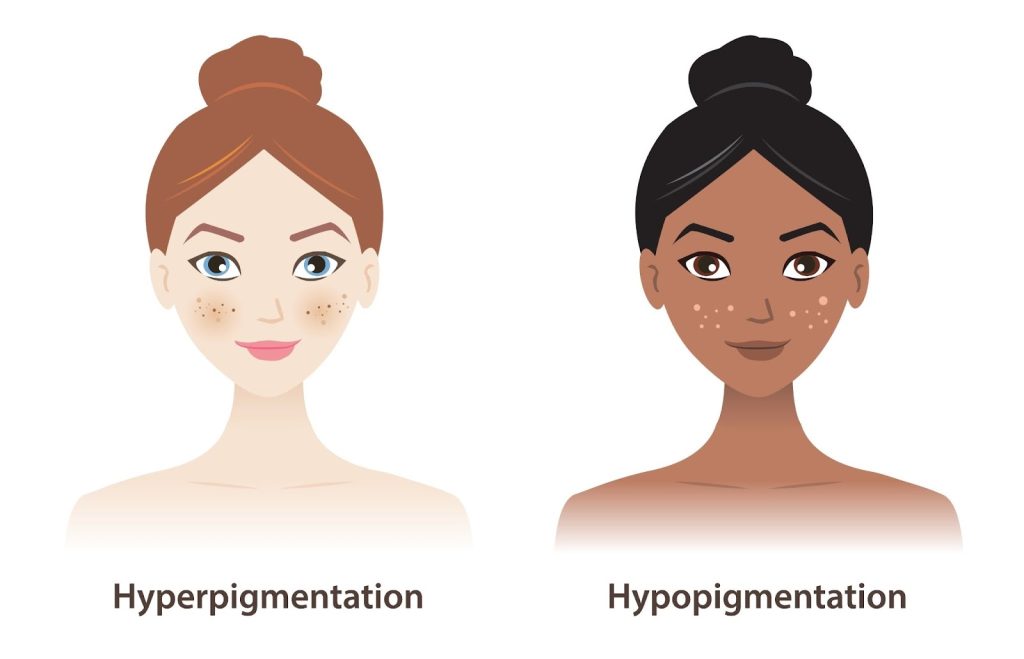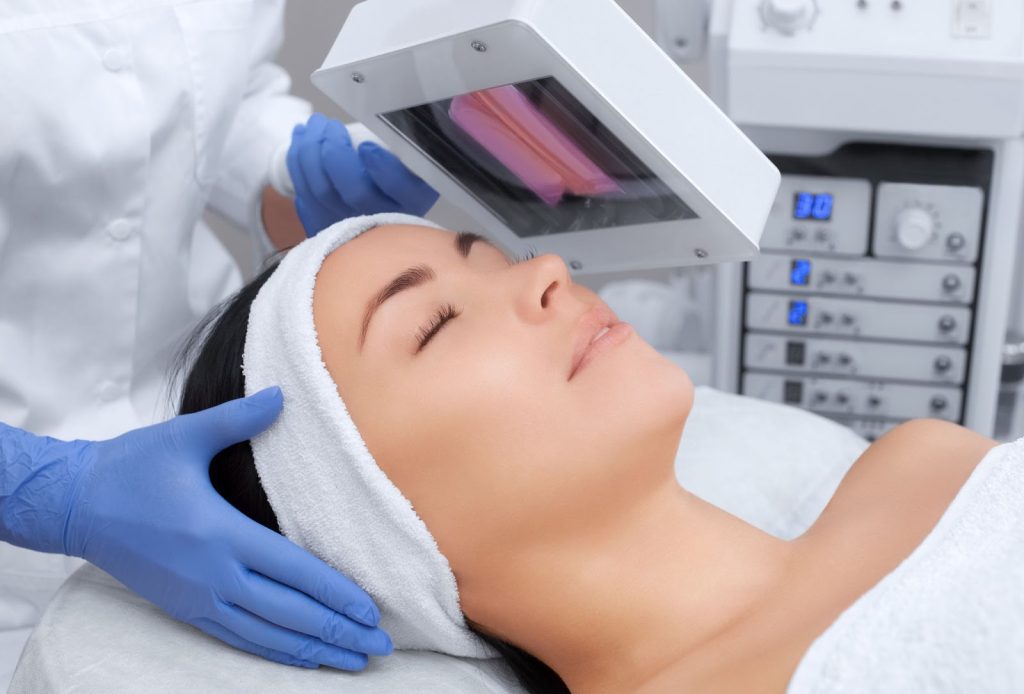What is pigmentation?
Pigmentation is the colour of our skin, which is determined by melanin, a pigment made by skin cells called melanocytes. Melanin gives skin its colour and helps shield it from the sun's harmful UV rays.
There are two main types of pigmentation:
- Hyperpigmentation: hyperpigmentation occurs when there is too much melanin production, leading to dark patches or spots on the skin. Common examples include freckles, sunspots (also called age spots or liver spots), melasma (dark patches often seen during pregnancy or hormonal changes), and post-inflammatory hyperpigmentation (dark spots left after skin inflammation or injury).
- Hypopigmentation: hypopigmentation occurs when melanin production decreases, causing lighter patches or spots on the skin. Conditions like vitiligo and certain fungal infections can result in hypopigmentation.

What causes pigmentation?
The occurrence of pigmentation is closely linked to melanin, the pigment responsible for skin colour. Causes of pigmentation problems include:
- Melanin production: melanocytes, the cells in the lower layer of the epidermis, produce melanin. Genetics influence the amount and type of melanin produced, but external factors like UV exposure can significantly increase melanin production.
- UV Radiation: UV radiation stimulates melanocytes to produce more melanin as a protective response. However, uneven melanin production can lead to hyperpigmentation or hypopigmentation, depending on the distribution and amount of melanin.
- Hormonal Influence: hormones can affect melanin production, leading to conditions like melasma. The exact mechanism is complex and involves interactions between hormones, melanocytes, and other skin cells.
- Inflammation: skin injuries or inflammations, such as those from acne, cuts, or burns, can lead to post-inflammatory hyperpigmentation (PIH). This occurs when the healing process leads to excess melanin production in the affected areas.
What are the symptoms of pigmentation?
The symptoms of pigmentation issues largely depend on whether the condition is hyperpigmentation or hypopigmentation.
Hyperpigmentation
- Dark patches or spots: areas of skin become darker than the normal surrounding skin.
- Variability: hyperpigmentation can appear on any part of the body and affects all skin types.
Hyperpigmentation includes conditions such as melasma, sunspots, and post-inflammatory hyperpigmentation, often due to sun exposure, hormonal changes, or skin injury.
Hypopigmentation
- Lighter patches: skin patches that are lighter than the surrounding areas.
- Visibility: more noticeable in individuals with darker skin, but can affect anyone.
Hypopigmentation includes conditions such as vitiligo and albinism.

Who is at risk of developing pigmentation in Singapore?
Several environmental, lifestyle, and physiological factors can worsen pigmentation, including:
- Increased sun exposure: excessive sun exposure without adequate protection can dramatically worsen pigmentation. UV rays can increase melanin production, deepening the colour of existing pigmentation and causing new spots to form.
- Lack of sun protection: sun protective measures such as using sunscreen, wearing protective clothing, or seeking shade can leave skin vulnerable to UV damage, escalating pigmentation issues.
- Hormonal fluctuations: changes in hormone levels, such as those during pregnancy, menopause, or due to the use of birth control pills, can trigger or intensify conditions like melasma.
- Skin injuries: picking at the skin, acne breakouts, and other forms of skin trauma can lead to post-inflammatory hyperpigmentation (PIH), which makes dark spots more pronounced after the initial injury heals.
- Certain medications: some medications, including certain antibiotics, hormone treatments, and non-steroidal anti-inflammatory drugs (NSAIDs), can increase the skin's sensitivity to sunlight, leading to worsened pigmentation.
- Improper treatment: using harsh skincare products or undergoing aggressive skin treatments without professional guidance can irritate the skin, potentially worsening pigmentation.
How is pigmentation diagnosed?
Diagnosing pigmentation issues involves the following:
- Medical history and physical examination: the skin will be assessed for signs of pigmentation issues, and a medical history will be obtained.
- Biopsy (for hyperpigmentation): a skin sample may be taken for microscopic examination to rule out other conditions.
- Additional tests (for hypopigmentation): to identify underlying causes, blood tests, skin scrapings, or fungal cultures might be performed.

What are the treatment options for pigmentation in Singapore?
There are several non-invasive methods to treat pigmentation. At Astique Clinic, we offer a holistic approach to treating pigmentation issues, incorporating a variety of treatments to address different types and causes of skin discolouration:
- Topical treatments: topical creams such as retinoids or hydroquinone can help lighten dark patches of hyperpigmentation.
- Laser treatment: common pigmentation treatments involve pico laser, and Broadband Light Treatment (BBL). Laser treatments break down pigment clusters and stimulate skin renewal, offering a targeted approach to reducing pigmentation.
Effective treatment of pigmentation requires a multifaceted approach that addresses the underlying causes and visible symptoms. Astique: The Aesthetic Clinic's comprehensive range of treatments offers personalised solutions to meet individual needs, combining progressive technology with expert care to achieve the best possible outcomes for those seeking to improve their skin's appearance.
Frequently asked questions
What is the main cause of pigmentation?
The main causes of skin pigmentation are primarily genetics, sun exposure, and certain medications. Genetics play a significant role, with variations in melanin production influenced by multiple genes. Sun exposure triggers melanin production as a protective response against UV radiation. Some medications can also affect skin colour by increasing or decreasing melanin synthesis.
How can I remove my pigmentation?
Pigmentation removal options vary depending on the type and severity but generally include topical treatments with prescription creams or over-the-counter products, laser therapy, chemical peels, and sun protection. It's essential to consult a medical professional to choose the most appropriate method for your skin type and pigmentation issue.
What is the meaning of pigmentation?
Pigmentation refers to the skin's colouring, which is primarily determined by the amount and type of melanin produced by melanocytes in the epidermis. Melanin types include eumelanin, which provides darker tones, and pheomelanin, which gives lighter tones. The variation in these melanin types and their distribution results in a wide range of human skin colours.
What is the best treatment for pigmentation?
The best treatment for pigmentation will depend on the type and cause. Options include topical medications like anti-inflammatory drugs and tyrosinase inhibitors (which prevent melanin production), antioxidants, laser treatments targeting pigment, and chemical peels. Consulting a medical professional is crucial to determining the most effective treatment plan based on individual needs.

